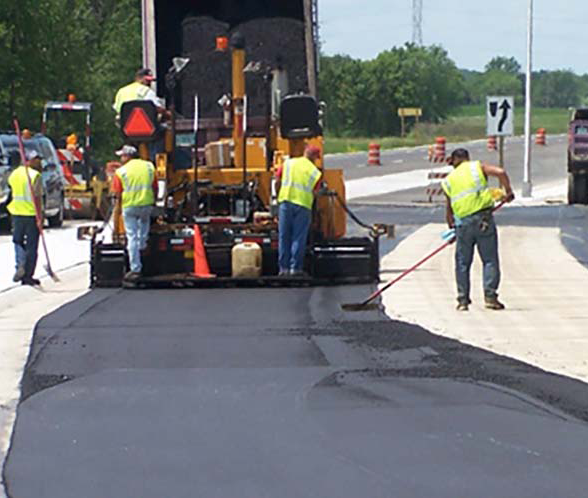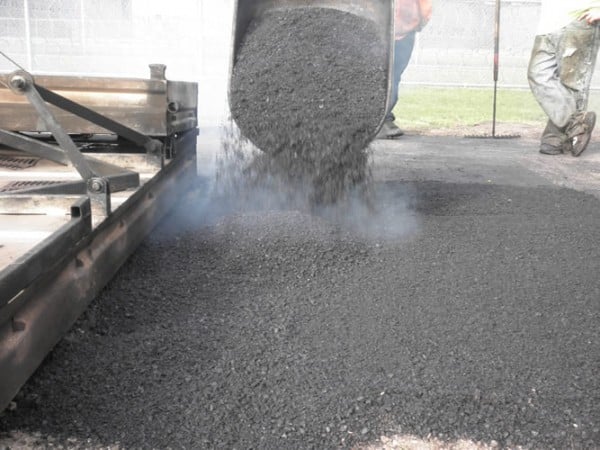Experience the Difference: Hot Mix Asphalt Paving for Regrading Projects
Wiki Article
Opening the Tricks of Hot Mix Asphalt Innovation
Discovering the midsts of hot mix asphalt innovation uncovers a globe where meticulous processes and specific solutions merge to shape our roadways and infrastructure. The combination of accumulations, fillers, and binders isn't just a construction task however a calculated orchestration of durability and effectiveness. As we peer into the detailed dancing of elements, a tapestry of resilience and sustainability unfolds. What lies below this surface of asphaltic proficiency, and what tricks wait to be revealed in the realm of leading technologies?Value of Warm Mix Asphalt
Hot Mix Asphalt plays a vital function in contemporary framework growth because of its resilience and cost-effectiveness. As one of the most commonly made use of paving product for roadways, highways, and car park, Warm Mix Asphalt uses a series of advantages that add to its significance in construction jobs. One key benefit is its capacity to endure rush hour loads and rough climate condition, offering a reputable and lasting surface area for transport networks. Furthermore, Hot Mix Asphalt is cost-effective in both first building and lasting maintenance, making it a preferred selection for lots of infrastructure tasks.The resilience of Warm Mix Asphalt stems from its structure, which includes accumulations, binder, and filler products that are thoroughly chosen and mixed to fulfill certain performance needs. Generally, the significance of Hot Mix Asphalt in framework development can not be underrated, as it continues to be a cornerstone of modern-day building techniques.
Parts of Asphalt Mixes
The structure of asphalt blends is composed of carefully selected aggregates, binder, and filler materials that are vital for achieving particular performance needs. Accumulations are the primary part of asphalt mixes, offering strength and security. The binder, typically asphalt or asphalt cement, holds the aggregates together and supplies adaptability and longevity to the mix.The combination and percentage of these elements play a substantial role in figuring out the high quality and efficiency of the asphalt mix. Engineers carefully develop the mix to satisfy details requirements, considering aspects like traffic volume, environment conditions, and pavement life expectancy. Appropriate choice and harmonizing of accumulations, binder, and fillers are vital for producing durable, resilient asphalt pavements.
Combining and Manufacturing Techniques

When the accumulations are chosen, the binder, commonly asphalt cement, is included in bind the products together. The binder's quality and amount considerably affect the mix's flexibility, toughness, and resistance to ecological aspects. Furthermore, fillers like moisturized lime or Rose city cement may be included to boost specific features of the asphalt mix, such as its workability or dampness resistance.
Throughout production, the accumulations and binder are heated, commonly between 250-325 ° F(121-163 ° C ), to facilitate mixing and ensure appropriate finishing of the aggregates. The blending procedure must be complete to achieve a homogeneous mix that advertises the preferred performance features of the asphalt. Numerous methods, such as batch mixing or drum blending, are utilized to achieve high-quality and constant asphalt mixes for building and construction tasks.
Elements Affecting Asphalt Efficiency
Factors influencing asphalt efficiency encompass a range of variables that affect the longevity, long life, and overall quality of asphalt pavements. One key element is the quality of products used in the asphalt mix.
Ecological problems also influence asphalt efficiency. Temperature level variants, dampness seepage, and web traffic tons can all impact the architectural integrity of the pavement. Design factors to consider, such as pavement thickness and drainage, are vital in ensuring the long-lasting performance of the asphalt pavement. By carefully taking into consideration these factors, professionals and engineers can enhance asphalt performance and improve the solution life of pavements.
Sustainable Practices in Asphalt Technology

Additionally, the advancement of warm-mix asphalt (WMA) innovations has gained grip in the last few years. WMA permits the production and positioning of asphalt blends at reduced temperature levels compared to traditional hot-mix asphalt, leading to minimized energy intake and greenhouse gas emissions. Additionally, using porous asphalt blends can help reduce stormwater runoff issues by enabling water to penetrate with the sidewalk and into the ground, promoting natural water filtering and charge procedures. By implementing these sustainable techniques, the asphalt sector can add to building an extra eco-friendly and resilient facilities network.
Verdict
In verdict, warm mix asphalt technology plays a vital role in contemporary framework advancement because of its longevity and More Help cost-effectiveness. By very carefully balancing parts, utilizing correct mixing strategies, and thinking about numerous variables, engineers can create top notch asphalt blends that withstand heavy web traffic loads and rough weather. Welcoming lasting practices, such as using recycled materials and warm-mix innovations, additionally boosts the environmental friendliness of asphalt innovation.
Mixing and production techniques in hot mix asphalt technology entail the specific mix and handling of accumulations, binder, and fillers to create a long lasting and high-performance asphalt mix.Variables affecting asphalt efficiency incorporate a variety of variables that influence the sturdiness, durability, and overall top quality of asphalt pavements. Sustainable practices in asphalt innovation encompass numerous campaigns intended at decreasing the environmental effect of asphalt production and paving procedures. By incorporating reclaimed asphalt sidewalk (RAP) and recycled asphalt shingles (RAS) into brand-new asphalt blends, the sector can dramatically minimize the intake of raw products and energy, while additionally decreasing land fill waste.
WMA permits for the production and positioning of asphalt mixes at lower temperature levels compared to standard hot-mix asphalt, resulting in minimized energy usage and greenhouse gas exhausts.
Report this wiki page